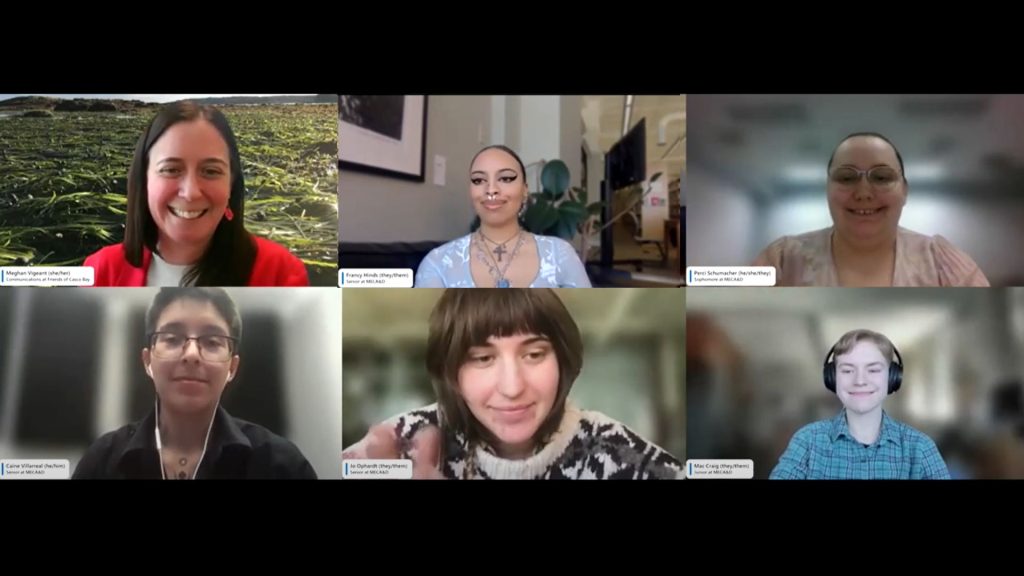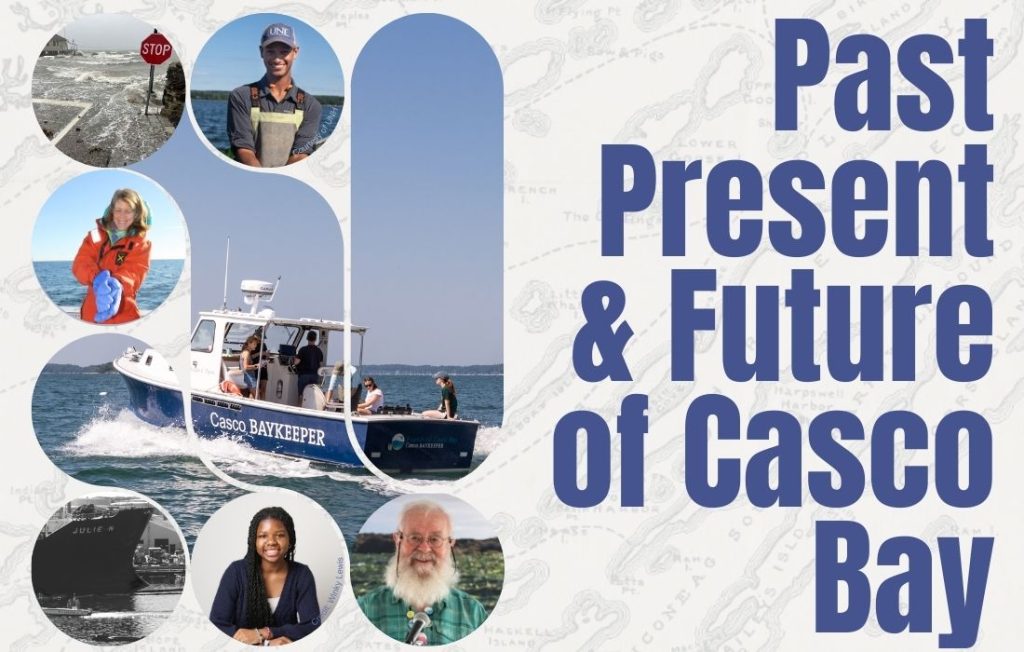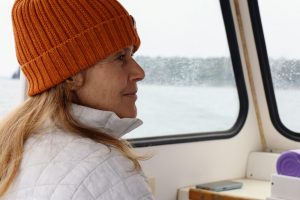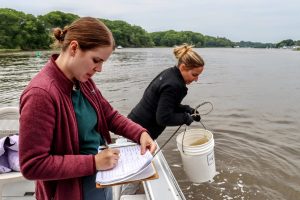By Meghan Vigeant
It started with the dirty history of Casco Bay.
Twenty students from the Maine College of Art and Design (MECA&D) stood on the bricks at Custom House Wharf, squinting into the February sun and scanning the water for clues. Their guide? Friends of Casco Bay Executive Director Will Everitt, standing atop a granite block like a wharfside docent, unraveling Portland’s complicated relationship with the sea over the last 200 years.
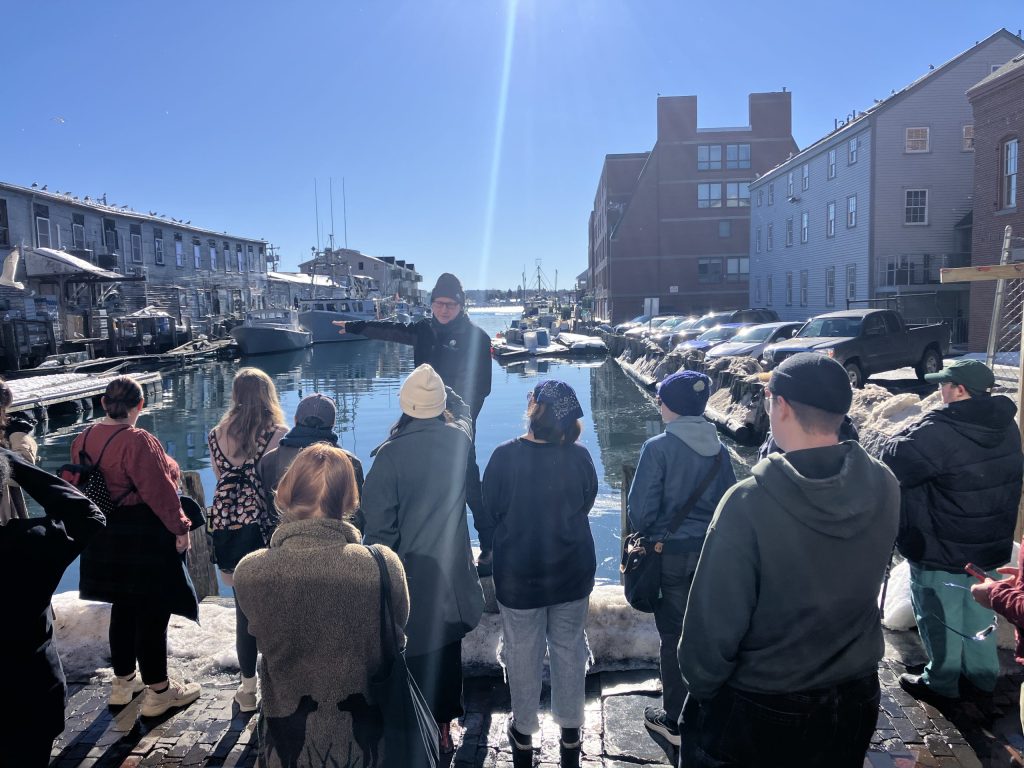
He painted a picture of the past: back when the waterfront lapped at Fore Street, when toxic chemicals from the industrial age were dumped into the Bay, and when Casco Bay’s stench earned it an infamous reputation in sailing magazines.
The students leaned in, curious. So did I, camera in hand, as Will brought us through time—from buried industrial pollution to present-day threats like stormwater runoff, “forever chemicals,” and sea level rise.
When the topic of flooding came up, I passed around my phone with a photo of blue-sky flooding taken right where we stood. No rain, no storm, just high tides creeping onto city streets. Heads tilted and eyes widened. It was the kind of moment you hope for when bridging education with environmental awareness.
Later, at a construction site on the Eastern Prom, we stumbled into a perfect teachable moment. Workers were removing a Combined Sewer Overflow (CSO) pipe—the kind Will had just described that sends sewage and stormwater into the Bay during heavy rains. Portland has been working to replace these systems with better infrastructure, and the students got to see firsthand how today’s solutions are reshaping the city’s relationship with the Bay.
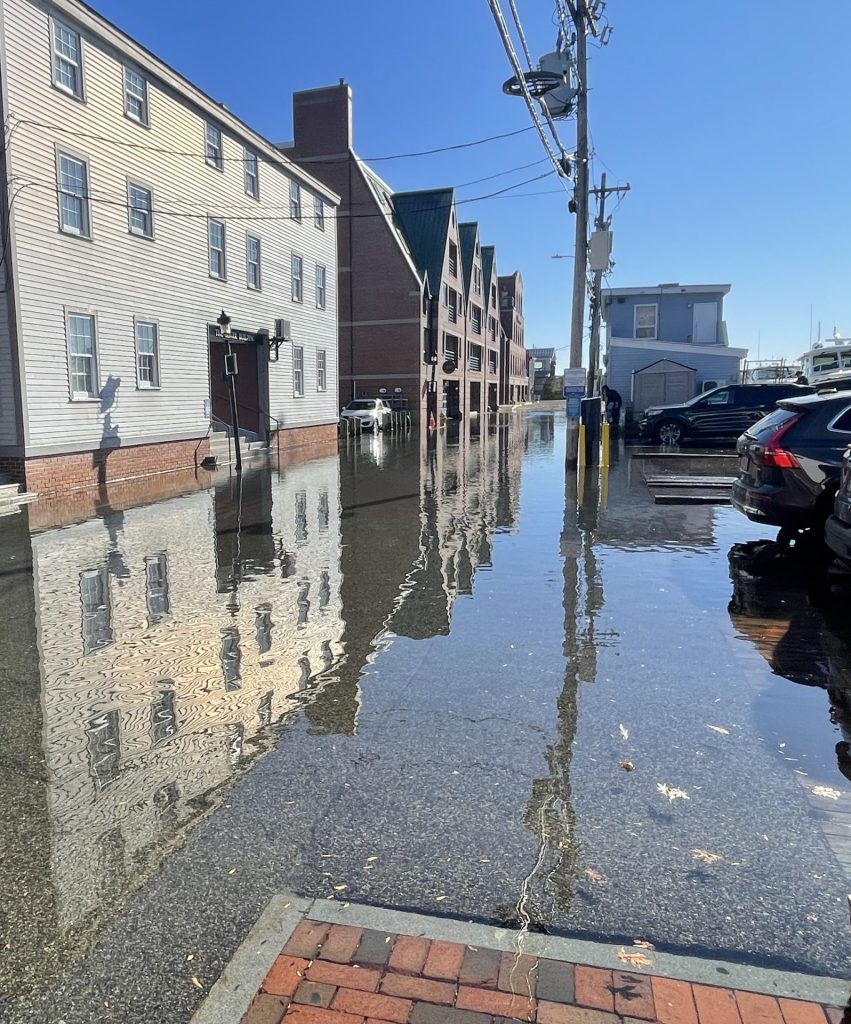
A Class with Big Questions
This immersive outing was part of Ocean Currents, a class taught by science educator and artist Deb Debiegun.
Deb—who also serves on the board of Friends of Casco Bay—designed the course to merge science with studio art. Her students didn’t just talk about environmental impact, they walked it, cleaning up Back Cove and tallying a total of 579 items—mostly plastic. Several students even kept select pieces of trash to repurpose into their art.
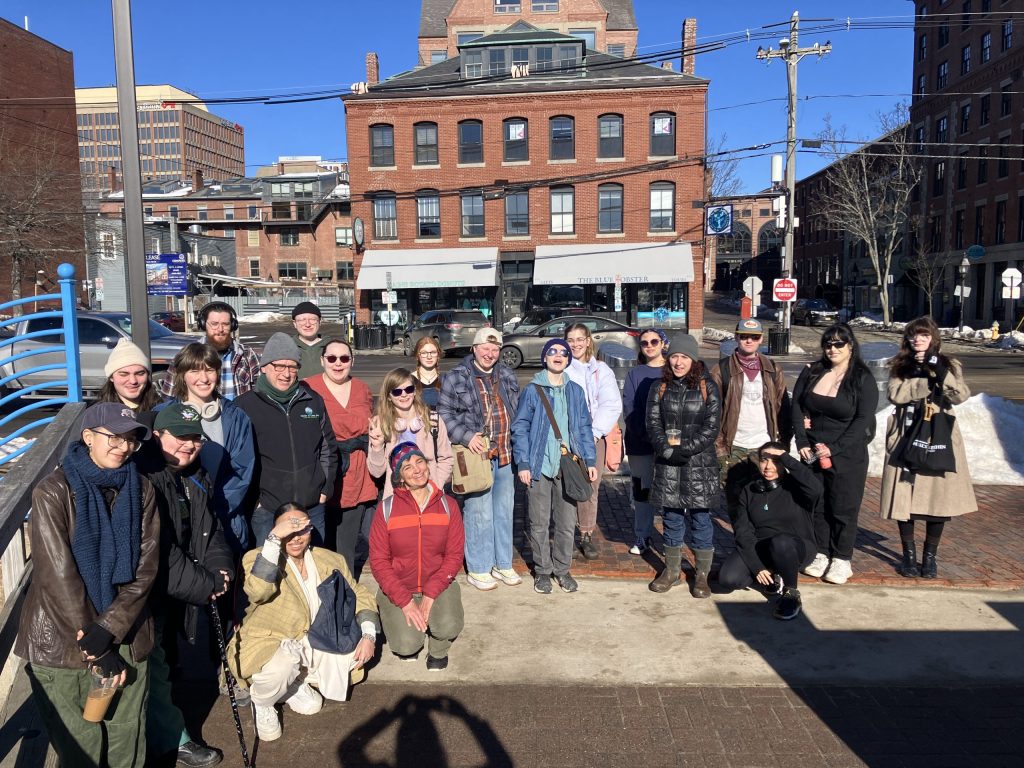
Over the next few weeks, each student researched a topic related to Casco Bay and translated what they learned into original artwork. When Deb invited us to their final presentations, we had no idea just how imaginative—and moving—the results would be.
There were crocheted eelgrass meadows, monster-movie posters about green crabs, and watercolor tributes to firefighters caught in the wake of PFAS spills. Seaweed became printmaking material. Diatoms turned into delicate scientific illustrations. Sculpture, video, zines, and posters became tools of interpretation and advocacy.
Here are just a few of the pieces created by the Ocean Currents class. To view all of them, visit the online exhibit.
From Studio to Webinar to Public Exhibit
I had the pleasure of hosting a public webinar, Imagining a Healthy Future for Casco Bay, where five student artists shared their work. I was entranced by their insights and eloquence as these bright young artists spoke about their creative process and how the class had changed the way they thought about art, impact, and the power of visual storytelling.
“The main job for us artists,” said Mac Craig, “is to communicate the more abstract aspects of Casco Bay. It’s much easier to have a creative mind distill it.”
Perci Schumacher added, “Just because things seem a little hopeless doesn’t mean we should give up on helping out the Earth—because that’s where we live.”
Their work carried messages of connection, consequence, and hope. From PFAS to eelgrass, from wastewater treatment to warming waters, these artists asked the public to look closer and care more deeply.
If you missed the webinar, I would encourage you to check out the recording and soak in some of the inspiration from these five young artists.
You can also view all of the pieces by the Ocean Currents class in the online exhibit.
See the Artwork in Person This Summer
On July 9, fourteen of these pieces will be displayed at our Past, Present, and Future of Casco Bay event and Members Annual Meeting at the Harraseeket Inn in Freeport. We hope you’ll join us to experience the creative force of this next generation—one that’s using their talents to inspire change, one brushstroke, sculpture, or stitch at a time.
Join us for Past, Present, and Future of Casco Bay and Friends of Casco Bay’s Members Annual Meeting
Wednesday, July 9, 2025
5:30–8 p.m.
Harraseeket Inn, 162 Main St, Freeport, ME
(Venue is ADA compliant)
Sliding scale donation $0–$55
